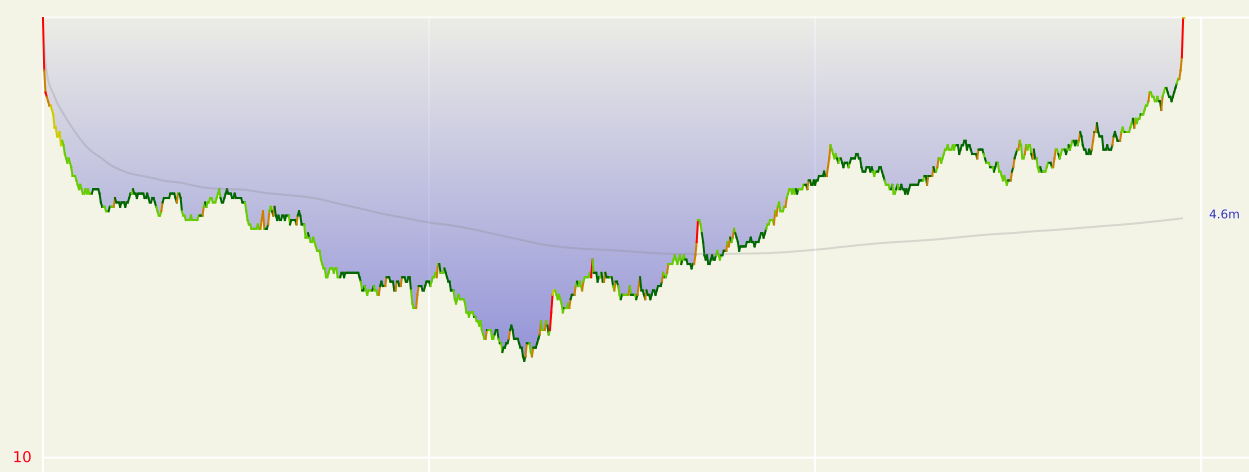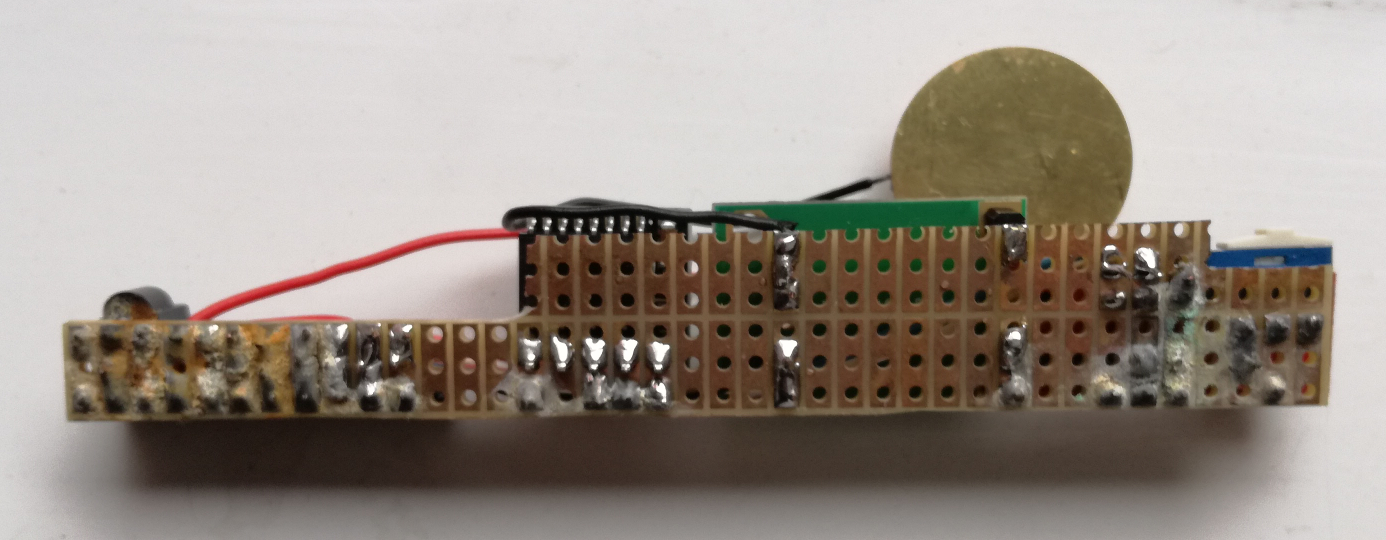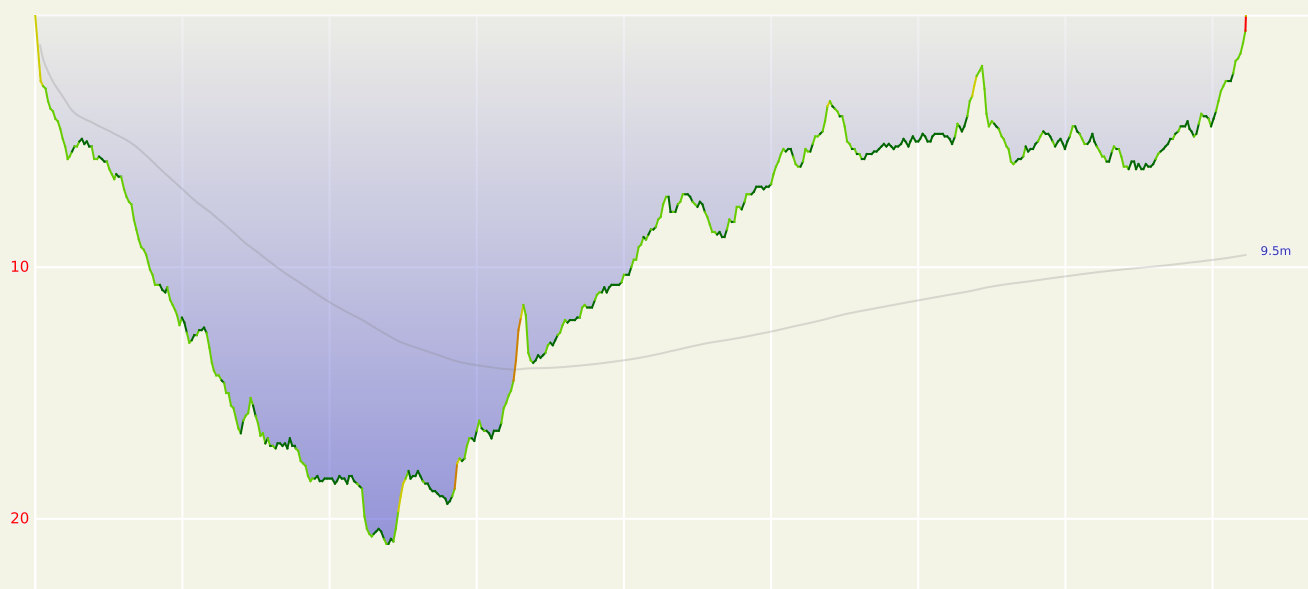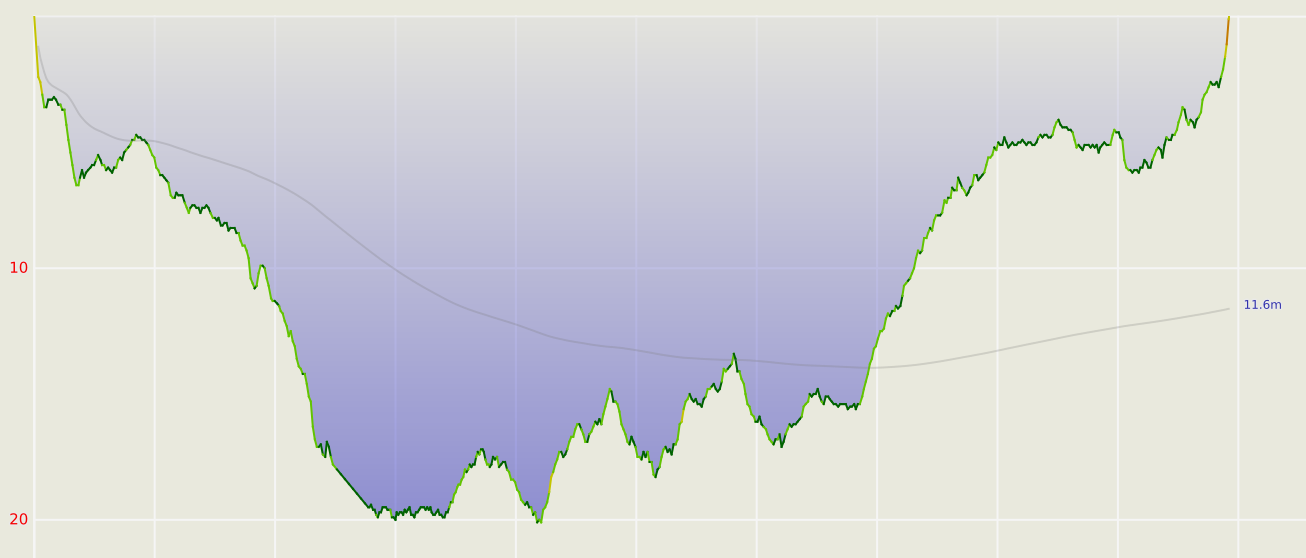Test week on Pag island
I had the pleasure to spend one week in the Blue Bay Diving Center on Pag island in Croatia. Of course I took DiveIno with me and performed many test dives. This post is about to share my experiences with you.
Prelude
You might remember that the original DiveIno version failed in Egypt. After this failure I promised to rebuild DiveIno from the ground up. First I built the Long board version based on the Otterbox Pursuit 20 case. I took it to a test dive on Krk island in Croatia. It leaked around 5-8 meter. I thought that the problem was with the shape of the board. It seemed to be too thick. I promised to make it slimmer, so I made the Slim board version.
In the meantime I ordered the bigger brother of the Otterbox Pursuit 20 case from the USA. It was arrived just after my trip to the Krk island. Fortunately I had enough spare parts to build a second DiveIno. I called it the Proto Board version, because it is built on top of the Adafruit Perma-Proto Half-sized Breadboard. A separate post will be written about how this can be done.
As a result I had two DiveInos to test in Croatia:
- The Slim Board version
- The Proto Board version
Only the hardware layout was different, the software was the same. I thought that if the first one fails, the second one might work. I had exactly 11 dives to find it out!
Slim Board test
I decided to give DiveIno test a quick start, so I took it with me to the check dive. It happened in shallow small bay in front of the diving center.
DiveIno survived and logged the dive!!! Here is the profile:

However I noticed some strange things. According to DiveIno the dive took about 15 minutes, but in reality it took 37 minutes. It seems that DiveIno measures the time 2.5 times slower than it should do. I suspected that the reason was that the measurement operation was initiated by a timer, which kicks off in every second. This is fine, but the whole calculation, including SD card based logging took more than 1 second. More precisely around 2.5 seconds. This was the reason why DiveIno was slow. I had to fix it for the next dive!
Besides that DiveIno did its job. The maximum depth of the dive was 7.8 meters. I had a feeling that in more deeper other strange things can happen.
Till the next dive I did not have enough time to fix the time duration issue, so I just charged the LiPo battery and took the Slim Board DiveIno for another deeper test dive. It turned out that it was too deep for DiveIno!
We did a wall dive and set the maximum depth about 30 meters. When I reached 23.8 meter the DiveIno software froze. I saw the same data on the screen till the end of the dive. When I opened up the case at the end of dive and I noticed that a minumum amount of water managed to get into the case. That caused a short circuit on the perfboard solder joints.

For sure I couldn’t take it for another test dive. At the end of the first day I had a DiveIno with buggy software and a non-watertight case. Fortunately I was able to save the parts and I had my second spare Proto Board DiveIno for the rest of the week.
Proto Board test
The second test day was started. Last evening I tried to fix the “one second problem”, so I changed the timer interrupt time to 5 seconds. When I started the dive I saw immediately that the fix was defective. The entire surface time from that point when DiveIno was switched into Dive Mode was added to the entire duration of the dive.
Besides that the bigger Otterbox Pursuit 40 case based DiveIno seemed to remain watertight and operational. After about 3 minutes I reached 17.9 meters and DiveIno software froze. Nothing was changed on the display, so I expected that some water got into the case just like yesterday with the Slim Board DiveIno version.
I felt myself miserable, because all of this. Suddenly after 16 minutes dive time the screen became responsive again. I saw 13.2 meter depth on the screen and everything seemed to be normal. When I got back to the boat I opened up the case and there was no water inside! What could cause this problem?
I decided to leave DiveIno at home for the second dive and think about the cause of the problem. In the evening I investigated the wires carefully and concluded that maybe the increasing pressure moved some wires to a wrong position. It losts its conductivity at 17.9 meters, but when I came back to 13 meter, it was placed into its original position, so the conductivity was reestablished.
In the evening I tried to reorganize the wires and fixed the dive duration problem. I started the third day with an updated software and slightly modified wires. In the morning we started to dive at 9 AM, so I was in a rush to get my gear ready. On the boat I closed the lid of the case and switched DiveIno into Dive Mode with the remote control. I jumped into the water and after a few seconds I saw that some water managed to get into the case. I quickly opened it up, removed the battery and the water. During the dive I only could think about what could go wrong again…
When I got back to the apartment I opened up the case and saw that the electronic parts are a little bit wet, but no corrosion! This was a good sign! The silica gel bags were wet, but that was all. I got the idea that maybe one edge of such a bag stuck inside the case sealing o-ring, which gave way to the sea water into the case.

Anyway I let the electronic parts dry on the next day and assembled the Proto Board DiveIno version again. It worked! But I had only two days left to test it!
On the fifth day when I jumped into the water I prayed to make it work. Actually it wasn’t…
The dive started promising, but after a while I saw 102 meter depth on the screen. Of course I wasn’t that deep, but it seems to me that a sensor error happened for some reason. Certainly it broke the no deco time calculation and hung the display. I had to filter out sensor errors in the software. I managed to apply this quick fix during the lunch break and fortunately DiveIno recoded the second dive on that day without any further error. I had a few beer this evening to celebrate it! After two years it worked (more or less)!

On the next day I planned to test the repetitive dive support. The first dive was at the Dolin wrecks. It is a deep dive, the maximum depth is more than 30 meters. Fortunately DiveIno made it! My maximum depth was 31.5 meter and the dive took 41 minutes. The profile can be seen below:

I monitored the no deco dive time calculated during the dive. DiveIno times seem to be less restrictive as what is calculated by my real dive computer. It must be investigated further in the future!
The second dive on that day was the Triget reef. It is really a nice place, but I couldn’t focus on it, because when I jumped into the water DiveIno showed 99 minutes deco on 3 meters.
1 | 00 Compartment ppN2 = ovf |
When I checked the logs after the dive I found that two compartments had an overflow, which caused this problem. For sure repetative dives have to be tested further in the future.

Conclusion
Maybe the most important result of this week is the motivation, which I gained to continue DiveIno development. Lot of divers were interested about what this small device is, which I kept in my hands during the dive.
Besides that I found more than 10 bugs in the software. It was proved that the Otterbox Pursuit 20 case is not suitable for DiveIno, because it lets the sea water in around 20 meter. Its bigger brother is a good choice. It can work till 30 meters, but it is rather big and hard to carry.
It is quite cumbersome to carry an IR remote control to the boat just to switch DiveIno into Dive Mode. A more suitable solution had to be designed for this problem.
I also have to work on the Settings, because the 0.05 milliBar steps to set the sea level pressure is too small. Besides that the UI has to be revamped. Maybe icons are more suitable than menu items.
I have other small improvement ideas, but there is a more pressing need for a real pressure test chamber! I would like to test the modifications right after I make them. Now I have to wait weeks to try them out in real sea water, which can ruin DiveIno at the first day. Will see how can I get one, but fortunately I have now the motivation to continue this project!

